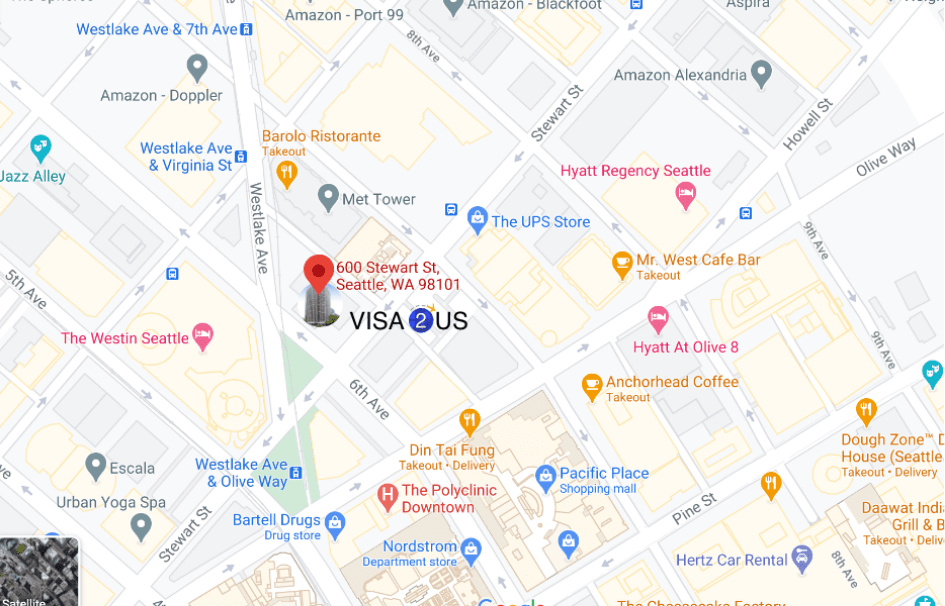Adjustment of Status, I-485

What is I-485?
Form I-485, officially called Adjustment of Status, is commonly known as another nickname: green card application form. Although the official title of the form seems baffling, if you plan to apply for the green card within the U.S region, the blog is what you’re looking for. The I-485 application is meant for individuals who are currently residing in the United States and want to change their status. It is one of the most common paths to obtaining a green card, and also, to many aliens coming to reside in the U.S., the starting point for U.S. citizenship application.
Eligibility
According to USCIS, there are seven major categories encompassing the applicants’ eligibility, including family-based, employment-based, special immigrant, asylum or refugee, human trafficking victim or crime victim, etc.
In order to process an I-485 Form, there are several requirements one needs to maintain during their time of filing.
- You have to be present inside the United States for filing the form.
- Your entry into the United States is lawful. This means that you are admitted into the U.S. with valid documentation and upon making entry into the country made face to face contact with an immigration officer, and such officer approved your entry.
- Depending on which eligibility criteria you fit in, you will need to get the necessary form(s) filed before you start Form I-485 filing. We list some examples below for your references:
- For family preference applicants, an approved Form I-130 is ready and a visa number is available. Immediate relatives of U.S. citizens have more leeway, however, and may file their adjustment of status application together with the I-130 petition.
- For job offer purposes,
- If you are employed by other companies/organizations, you should get the Form I-140 (filed by your employer.) approved before you start filing Form I-485.
- If you are self-employed you should get your Form I-526 approved before you start filing Form I-485.
Required Documents
- Form I-485 (check our form I-485 guidance here.)
- Two passport style photographs
- A copy of a government issued ID with photograph
- A copy of your birth certificate (if unavailable or does not exist; provide other acceptable evidence of birth such as church, school, or medical records)
- Inspection and admission, or inspection and parole documentation (e.g., lawful visa and I-94 travel record.)
- Certified police and court records of all criminal charges (if none than not applicable)
- Documentation of immigrant category, such as copy of Form I-797
- Confirmation of a job offer (if applicable)
- Form I-864, Affidavit of Support
- Form I-212, Application of Permission to Reapply for Admission into the U.S. after Deportation or Removal (if applicable)
- Documentation regarding J-1 and J-2 visitor status (if applicable)
- Form I-508, Waiver of Diplomatic Rights (if working in a diplomatic capacity or with NATO)
- Form I-566, Interagency Record of Request (if you have an A, G, or NATO non-immigrant status)
- Form I-693, Report of Medical Examination and Vaccination Record
How to File
You can only file Form I-485 via mail. It is recommended that you fill out the form online and print it out for mailing. However, to be able to frequently check your application status, it’s highly recommended that you link your paper filing receipt notice to your USCIS account. To handle with most care, we provide the step-by-step instructions here below:
Complete the forms
We have a comprehensive guide in filling out the form, check our form guidance here. Below is the summary of the general reminders from USCIS:
- Make sure you download the current version of forms. USCIS will reject any application using the outdated form.
- If you decide to print the form out and hand write your application, please use black ink and do not use highlighters or correction fluid or tape. If you make the error, please start with the new form.
- If you are filing multiple forms, make sure you state your name, date of birth, and A-number (if any) in the same way on each form.
- Pay the correct fee. USCIS will reject forms submitted with incorrect or incomplete fees. Make sure the amount is correct before you make the payment. Currently, the filing fee for Form I-130 is $1,140, plus an $85 biometric services fee. The price varies for different conditions (such as age, eligibility, etc.) You can also use the Fee Calculator to check the latest updated fees for each form.
- Send single-sided copies of the application(s).
After you get all your documents and forms completed, you can start the next step: assemble your application.
Assemble your application I - Preparation
Pay the fees
- Credit card:
- Check/Money order: For applying in the U.S., you should mail your check/money order with your application form. Also be sure that the office you contact is available to proceed money order/checks.
Notification and Form Access
- Apply for email/text message notice: Form G-1145, E-Notification of Application/Petition Acceptance
- The notification will not include any personal information; it only lists your receipt number and tells you how to obtain case status information.
- The service is only available for forms filed at the three USCIS Lockbox facilities located in Lewisville, Texas; Chicago, Illinois; and Phoenix, Arizona.
- To file the form, please download and complete the form and clip it on the front page of your filing petition form.
Final Check before the wrap-up
- The supporting documents should either be in English or accompanied by a complete English translation.
- Please provide the copies of those documents unless requested by USCIS. Since those documents may become part of the record, it is likely that the originals may not be returned to the applicants.
- All attachments are required to have your name and A-Number (if any) listed. Numbering the pages is also acceptable (for example, “page 1 of 11.)
Assemble your application II - Wrap-up
Envelope the application
- Mark the envelope and the cover letter with the category/nature of the submission. For instance, Original Submission, Brief for an Appeal, or Response To Request for Additional Information. Furthermore, the form number is required (e.g., Form -130.)
Wrap up in the packet
- Use fasteners to hold together thick or bulky applications/petitions. Two-hole punching the top of the material for easy placement in the file is appreciated. Avoid using heavy-duty staples, binders, or folders that make the documents hard to disassemble.
- Sticky tabs/notes help in locating items listed in your attachments. Please place the tabs/notes on the bottom of the page, not the side.
- Do not submit oversized documentation unless it is necessary.
- Be sure to make different cases separated by fasteners or rubbers if you are delivering them in the same envelope.
- If you are re-submitting the packet in response to a Request for Evidence (RFE), please place the notice requesting the additional evidence/information on the top of the packet. Also, please use the special mailing envelope provided.
- If you are submitting evidence in support of a previously filed appeal or motion, place a cover letter with “Brief for (Appeal/Motion)” on top of the packet.
Mail Your Application, Petition, or Request:
Mail your forms to the address listed on that form’s webpage. You may submit your forms through USPS, FedEx, DHL, or UPS. If you mail to the wrong filing address, USCIS has the right to reject your application/petition as improperly filed and return it to you to re-file. If you choose the U.S. Postal Service, certified mail with a return receipt is the safest way to send your petition.
That’s all for paper filing. Should you have any questions, feel free to drop us a message here :)
Next Step
- The first step is getting your receipt of the application within the next 2~3 weeks by mail (but it depends on the capacity USCIS handles at the moment.) You can also login the account to check your application status. During this period of time, you may also receive the contact from USCIS asking for further information or supported documents through Request for Evidence (RFE,) if necessary.
- Approximately 3 to 5 weeks after filing, you can expect to receive an appointment notice for your Biometrics (fingerprints). This is a basic security clearance and background check performed to confirm your identity.
- 5 to 8 weeks later is your actual Biometrics appointment. Bring a passport or National photo ID issued by your country to obtain access into the building.
- Approximately 12 to 16 weeks after filing, you may receive your Employment Authorization Document (EAD) (if you’ve applied Form I-765 before,) or arrange the medical examination, during which you will receive the sealed Form I-693.
- Now here comes the biggest time gap during the whole process: waiting for Notice of Interview. This notice can appear in the mail anywhere from 4 to 10 months after filing (yes, the waiting can be extremely long…,) so try to keep variability if you’re in the middle of the process. The interview is another standard procedure. The type of case presented to the interviewer will influence your chances of receiving a Green Card, and it is possible that the interview can be waived entirely by USCIS.
- Adjustment of Status Interview. Make sure all of your information from your I-485 is up to date. The interview has a sole purpose—to determine one's ability and sincerity in becoming a lawful permanent resident (LPR.) During the interview, the officers verify your eligibility based on your information and the purpose for your application (e.g., marriage, employment, refugee status, etc.) You can also update/revise any answers completed incorrectly or that have changed since filing the application. Any unanswered questions or incomplete answers are expected to be resolved at the interview. If such modifications are made, you should re-sign and date the application at the conclusion of the interview. Therefore, you will bring the completed form to your marriage green card interview in case there is any revision required.
- The result of the application may come out around one to two months after the interview.
** The interview may be waived for special circumstances, please refer to USCIS site for further information.
Note: Be prepared to explain any leave of absences from the United States either during the time of filing or in the immediacy before you filed your I-485 application. Officers may question interviewees on their travel history and the primary purpose for traveling outside of the United States
The result of the application may come out about one to two months after the interview.
Hope the guide helps you with your DIY application journey; should you have any questions, you are always welcome to contact Visa2US and consult our attorney.
I-485 Adjustment of Status FAQs

Skip the research part of your immigration application.
Simply answer questions we prepared for you and the completed forms are ready!
Contact Us








